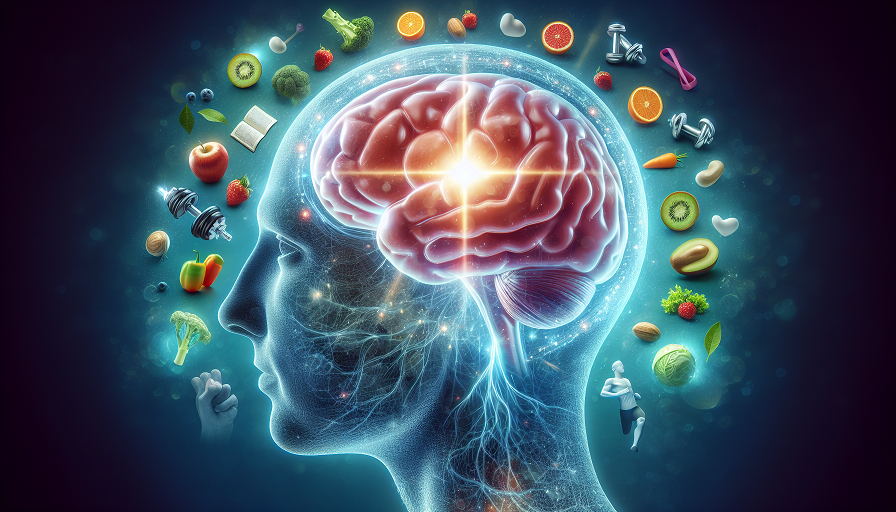
Metacognition, often referred to as “thinking about thinking,” is the process of being aware of and understanding one’s own thought processes. It involves the ability to monitor, control, and assess cognitive activities, playing a critical role in learning, problem-solving, and decision-making. While metacognition is a well-recognized concept in psychology and education, its underlying neural mechanisms are still being explored. In this article, we will examine the neuroscience behind metacognition, shedding light on how the brain enables this higher-order cognitive function.
Contents
What Is Metacognition?
Metacognition encompasses a range of mental activities that involve reflecting on and regulating one’s own cognitive processes. It includes the ability to plan, monitor, and evaluate actions, thoughts, and learning strategies. Metacognition is often divided into two main components: metacognitive knowledge and metacognitive regulation.
Metacognitive Knowledge
Metacognitive knowledge refers to an individual’s understanding of their cognitive abilities and strategies. This includes knowledge of personal strengths and weaknesses, awareness of the demands of different tasks, and familiarity with strategies that can be employed to achieve specific cognitive goals. For example, knowing that you struggle with concentration in noisy environments and planning to study in a quiet space is an application of metacognitive knowledge.
- Tip: Developing metacognitive knowledge involves self-reflection and a conscious effort to understand how you think and learn.
Metacognitive Regulation
Metacognitive regulation involves the ability to control and adjust cognitive processes in real-time. This includes planning how to approach a task, monitoring progress, and making adjustments as needed. For instance, if you find that a particular problem-solving strategy is not working, metacognitive regulation allows you to switch to a different approach.
- Tip: Practicing metacognitive regulation can improve problem-solving and decision-making by making you more adaptable in your thinking.
The Neural Basis of Metacognition
The brain regions involved in metacognition are complex and interconnected, primarily involving the prefrontal cortex, anterior cingulate cortex, and various networks that support cognitive control and self-reflection. These areas work together to enable the monitoring and regulation of thought processes.
The Prefrontal Cortex
The prefrontal cortex (PFC) is the brain’s executive control center and plays a crucial role in metacognition. The PFC is responsible for higher-order cognitive functions such as planning, decision-making, and problem-solving. It enables individuals to reflect on their thoughts, evaluate their cognitive strategies, and make adjustments to improve performance.
- Tip: Engaging in activities that challenge your executive functions, like complex problem-solving or strategic planning, can help strengthen the PFC’s role in metacognition.
The Anterior Cingulate Cortex
The anterior cingulate cortex (ACC) is another key player in metacognition. It is involved in error detection, conflict monitoring, and evaluating the outcomes of decisions. The ACC helps individuals recognize when they are making mistakes or when a strategy is not working, prompting adjustments to cognitive processes.
- Tip: Mindfulness meditation and tasks that require sustained attention can help enhance the ACC’s ability to monitor and regulate thought processes.
The Default Mode Network
The default mode network (DMN) is a network of brain regions that is active when the mind is at rest and engaged in self-referential thinking. The DMN is associated with introspection, self-reflection, and the evaluation of past experiences. It plays a role in metacognitive activities by allowing individuals to reflect on their thoughts and actions, and to consider alternative approaches.
- Tip: Allowing time for reflection and introspection can activate the DMN, supporting the development of metacognitive skills.
The Role of Metacognition in Learning and Problem-Solving
Metacognition is essential for effective learning and problem-solving. It enables individuals to evaluate their understanding, recognize gaps in knowledge, and employ strategies to address those gaps. By enhancing metacognitive abilities, learners can become more independent and effective in their educational pursuits.
Enhancing Learning Through Metacognition
Metacognitive strategies such as self-questioning, summarizing, and reviewing are powerful tools for enhancing learning. These strategies encourage learners to actively engage with the material, monitor their comprehension, and make necessary adjustments to their study methods. For example, a student might use self-questioning to check their understanding of a concept and then review the material if they find gaps in their knowledge.
- Tip: Incorporate metacognitive strategies into your study routine to improve retention and understanding of new information.
Problem-Solving and Decision-Making
In problem-solving, metacognition allows individuals to evaluate the effectiveness of different strategies, anticipate potential obstacles, and adjust their approach as needed. This reflective process is crucial for navigating complex problems, as it helps prevent rigid thinking and promotes cognitive flexibility. For instance, a problem-solver might recognize that their current approach is not yielding results and switch to a different strategy that better fits the problem at hand.
- Tip: Practice metacognitive reflection during problem-solving tasks by regularly assessing the effectiveness of your strategies and being open to trying new approaches.
Metacognition and Emotional Regulation
While metacognition is often associated with cognitive tasks, it also plays a significant role in emotional regulation. By being aware of and regulating one’s own emotions, individuals can maintain better control over their cognitive processes and decision-making abilities.
The Interplay Between Emotion and Cognition
Emotions can have a profound impact on cognitive processes, including memory, attention, and decision-making. Metacognition enables individuals to recognize when emotions are influencing their thoughts and to take steps to mitigate these effects. For example, someone might notice that anxiety is impairing their ability to focus and use relaxation techniques to calm their mind before continuing with a task.
- Tip: Develop metacognitive awareness of your emotional states and practice strategies for managing emotions that may interfere with cognitive performance.
Mindfulness and Emotional Awareness
Mindfulness practices, which emphasize present-moment awareness and non-judgmental observation of thoughts and feelings, are closely related to metacognition. By cultivating mindfulness, individuals can enhance their metacognitive awareness of emotions, leading to better emotional regulation and cognitive control. This can be particularly beneficial in high-pressure situations where emotions might otherwise cloud judgment.
- Tip: Incorporate mindfulness exercises into your daily routine to enhance emotional regulation and support metacognitive processes.
Improving Metacognitive Skills: Practical Strategies
Developing metacognitive skills is a continuous process that can be enhanced through practice and intentional reflection. By incorporating specific strategies into your daily routine, you can improve your ability to think about your thinking and make more informed decisions.
Self-Reflection and Journaling
One of the most effective ways to enhance metacognition is through regular self-reflection. Keeping a journal where you record your thoughts, decisions, and reflections can help you become more aware of your cognitive processes. By reviewing your journal entries, you can identify patterns in your thinking, recognize areas for improvement, and refine your cognitive strategies.
- Tip: Set aside time each day or week for self-reflection and journaling to track your cognitive and emotional processes.
Goal Setting and Planning
Setting clear goals and creating detailed plans to achieve them are essential components of metacognitive regulation. By outlining your objectives and the steps needed to reach them, you engage in forward-thinking that enhances cognitive control and decision-making. Regularly reviewing and adjusting your goals based on your progress further supports the development of metacognitive skills.
- Tip: Use goal-setting techniques, such as SMART goals (Specific, Measurable, Achievable, Relevant, Time-bound), to structure your thinking and improve metacognitive regulation.

